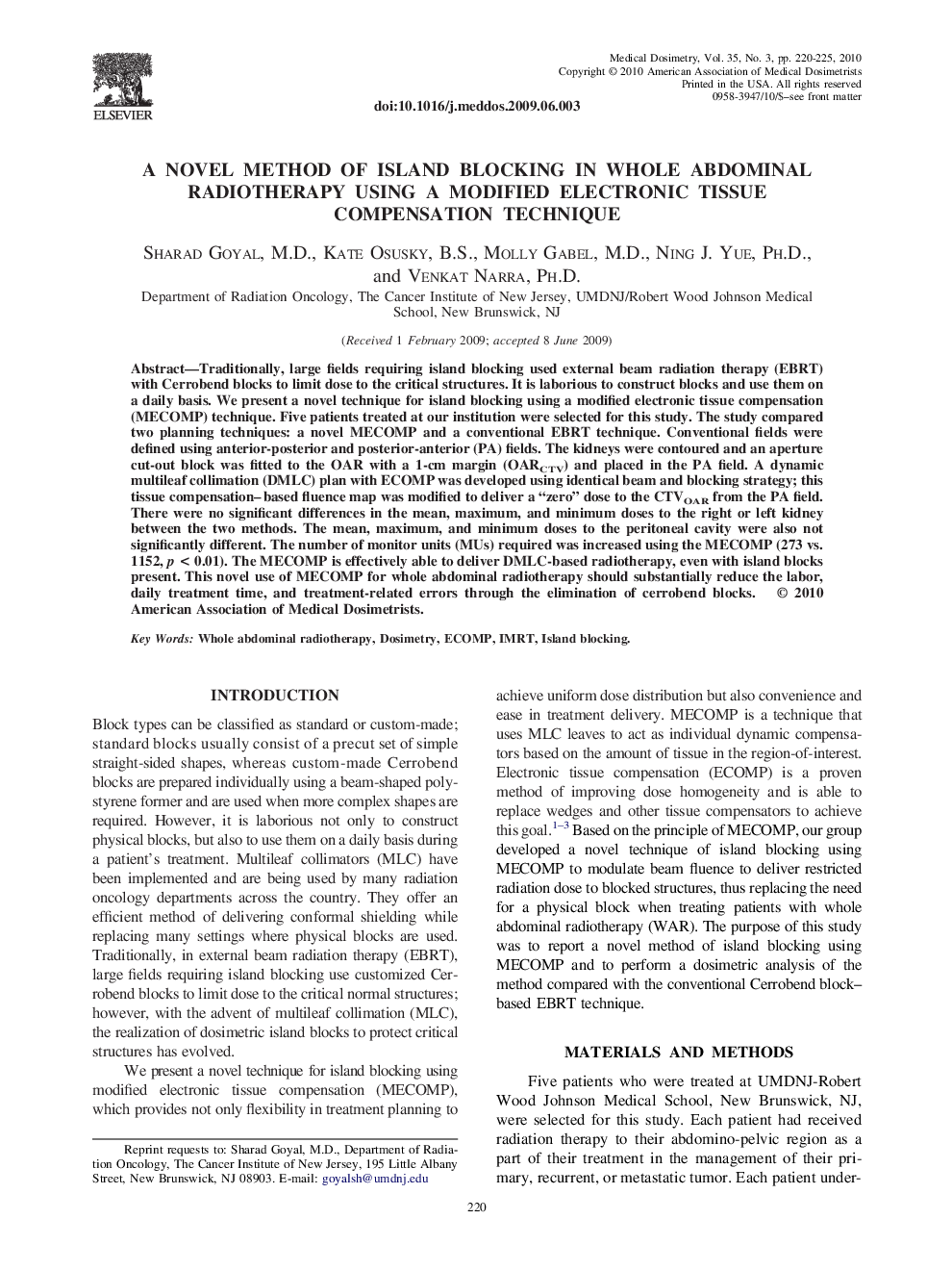| Article ID | Journal | Published Year | Pages | File Type |
|---|---|---|---|---|
| 1885355 | Medical Dosimetry | 2010 | 6 Pages |
Abstract
Traditionally, large fields requiring island blocking used external beam radiation therapy (EBRT) with Cerrobend blocks to limit dose to the critical structures. It is laborious to construct blocks and use them on a daily basis. We present a novel technique for island blocking using a modified electronic tissue compensation (MECOMP) technique. Five patients treated at our institution were selected for this study. The study compared two planning techniques: a novel MECOMP and a conventional EBRT technique. Conventional fields were defined using anterior-posterior and posterior-anterior (PA) fields. The kidneys were contoured and an aperture cut-out block was fitted to the OAR with a 1-cm margin (OARCTV) and placed in the PA field. A dynamic multileaf collimation (DMLC) plan with ECOMP was developed using identical beam and blocking strategy; this tissue compensation-based fluence map was modified to deliver a “zero” dose to the CTVOAR from the PA field. There were no significant differences in the mean, maximum, and minimum doses to the right or left kidney between the two methods. The mean, maximum, and minimum doses to the peritoneal cavity were also not significantly different. The number of monitor units (MUs) required was increased using the MECOMP (273 vs. 1152, p < 0.01). The MECOMP is effectively able to deliver DMLC-based radiotherapy, even with island blocks present. This novel use of MECOMP for whole abdominal radiotherapy should substantially reduce the labor, daily treatment time, and treatment-related errors through the elimination of cerrobend blocks.
Related Topics
Physical Sciences and Engineering
Physics and Astronomy
Radiation
Authors
Sharad M.D., Kate B.S., Molly M.D., Ning J. Ph.D., Venkat Ph.D.,
